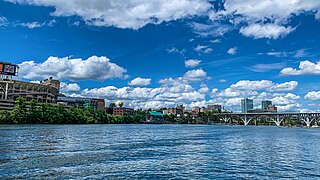
Knoxville is a city in and the county seat of Knox County, Tennessee, United States. As of the 2020 United States census, Knoxville's population was 190,740, making it the largest city in the East Tennessee Grand Division and the state's third largest city after Nashville and Memphis. It is the principal city of the Knoxville metropolitan area, which had a population of 879,773 in 2020.

The 1982 World's Fair, officially known as the Knoxville International Energy Exposition (KIEE) and simply as Energy Expo '82 and Expo '82, was an international exposition held in Knoxville, Tennessee, United States. Focused on energy and electricity generation, with the theme Energy Turns the World, it was officially registered as a "World's Fair" by the Bureau International des Expositions (BIE).

The Tennessee Centennial and International Exposition was an exposition held in Nashville from May 1 – October 31, 1897 in what is now Centennial Park. A year late, it celebrated the 100th anniversary of Tennessee's entry into the union in 1796. President William McKinley officially opened the event from the White House, where he pressed a button that started the machinery building at the fair; he would visit in person a month later.

Knoxville College is a historically black liberal arts college in Knoxville, Tennessee, United States, which was founded in 1875 by the United Presbyterian Church of North America. It is a United Negro College Fund member school.

The Panama–California Exposition was an exposition held in San Diego, California, between January 1, 1915, and January 1, 1917. The exposition celebrated the opening of the Panama Canal, and was meant to tout San Diego as the first United States port of call for ships traveling north after passing westward through the canal. The fair was held in San Diego's large urban Balboa Park.

The Foothills Parkway is a national parkway which traverses the foothills of the northern Great Smoky Mountains in East Tennessee, located in the southeastern United States. The 72.1-mile (114 km) parkway will connect U.S. Route 129 along the Little Tennessee River in the west with Interstate 40 (I-40) along the Pigeon River in the east.

Zoo Knoxville, formerly known as the Knoxville Zoo or Knoxville Zoological Gardens, is a 53-acre (21 ha) zoo located just east of downtown Knoxville, Tennessee, United States, near exit 392 off Interstate 40. The zoo is home to about 1,200 animals and welcomes over 585,000 visitors each year.
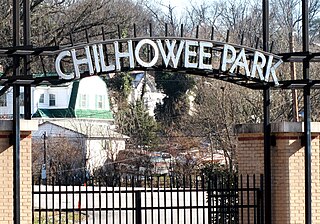
Chilhowee Park is a public park, fairgrounds and exhibition venue in Knoxville, Tennessee, United States, located off Magnolia Avenue in East Knoxville. Developed in the late 19th century, the park is home to the Tennessee Valley Fair and hosts several dozen expositions annually. The park covers 81 acres (33 ha), and includes a 57,100-square-foot (5,300 m2) exposition center, a 1910-era bandstand, a 4,500-seat amphitheater, and a 3-acre (1.2 ha) lake, Lake Ottosee. The park is also home to The Muse Knoxville, a children's science museum formerly known as the East Tennessee Discovery Center.
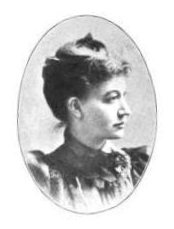
Margaret Elizabeth Crozier French was an American educator, women's suffragist and social reform activist. She was one of the primary leaders in the push for women's rights in Tennessee in the early 1900s, and helped the state become the 36th state to certify the 19th Amendment to the United States Constitution, giving women the right to vote, in 1920. She also founded the Ossoli Circle, the oldest federated women's club in the South, and led efforts to bring coeducation to the University of Tennessee.
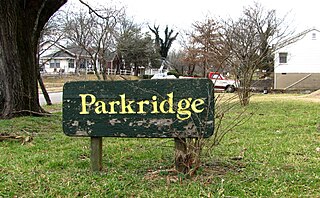
Parkridge is a neighborhood in Knoxville, Tennessee, United States, located off Magnolia Avenue east of the city's downtown area. Developed as a streetcar suburb for Knoxville's professional class in the 1890s, the neighborhood was incorporated as the separate city of Park City in 1907, and annexed by Knoxville in 1917. In the early 1900s, the neighborhood provided housing for workers at the nearby Standard Knitting Mill factory.

Anna Catherine Wiley was an American artist active primarily in the early twentieth century. After training with the Art Students League of New York and receiving instruction from artists such as Lloyd Branson and Frank DuMond, Wiley painted a series of impressionist works that won numerous awards at expositions across the Southern United States, and have since been displayed in museums such as the Metropolitan Museum of Art and the Morris Museum of Art. In 1926, Wiley was institutionalized after suffering a mental breakdown, and never painted again.
Southern Railway 154 is a 2-8-0 G class steam locomotive built in 1890 by Schenectady Locomotive Works for Southern Railway.

Chilhowee Park is a residential neighborhood in Knoxville, Tennessee, United States, located off Magnolia Avenue in the East Knoxville area. Developed as a streetcar suburb in the 1890s, this neighborhood was initially part of Park City, which was incorporated as a separate city in 1907, and annexed by Knoxville in 1917. Chilhowee Park lies adjacent to one of Knoxville's largest municipal parks, as well as Zoo Knoxville. The neighborhood contains a notable number of early-20th-century houses.
Joseph Knaffl was an American art and portrait photographer, active in Knoxville, Tennessee, during the late 19th and early 20th centuries. He is best known for his 1899 portrait, "Knaffl Madonna," which has been reprinted thousands of times, and is still used for Hallmark Christmas cards. Knaffl was a partner in two Knoxville studios: Knaffl and Brother, formed in 1884, and Knaffl and Brakebill, formed in 1909.
Richard Franklin Graf (1863–1940) was an American architect active primarily in Knoxville, Tennessee and the vicinity in the early 20th century. His works include Stratford Mansion (1910), Sterchi Building (1921), St. John's Lutheran Church (1913), and the Journal Arcade (1924). His home, the Prairie School-inspired Graf House, is considered Knoxville's first modern home. Several buildings designed by Graf have been listed on the National Register of Historic Places.

The Tennessee Valley Fair is an annual regional fair held in Knoxville, Tennessee at Chilhowee Park & Exposition Center. The Tennessee Valley Fair takes place every September and lasts ten days.
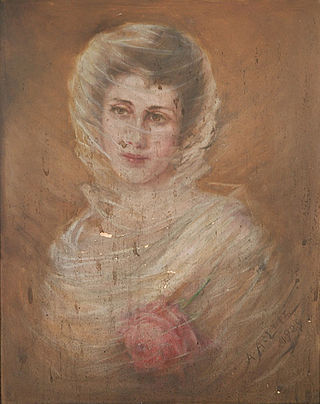
Adelia Armstrong Lutz was an American artist active in the late nineteenth and early twentieth centuries. She organized art circles in Knoxville, Tennessee, as director of the Knoxville Art Club and as a co-organizer of the Nicholson Art League. Her still lifes and portraits were exhibited throughout the American South, and they are to be the subject of a permanent exhibit at her former home, Historic Westwood.
The following is a timeline of the history of the city of Knoxville, Knox County, Tennessee, USA.

Sara Ward Conley was an American artist from Nashville, Tennessee.

The Appalachian Exposition, also known as the Appalachian Exhibition, was an event held in 1910 and 1911 in Knoxville, Tennessee's on property owned by Knoxville Railway and Light. The park grounds were 65 acres and included two lakes. The exhibitions demonstrated progress in Southern industry. Former president Theodore Roosevelt spoke at the 1910 exposition, and president William Howard Taft spoke in 1911.
















